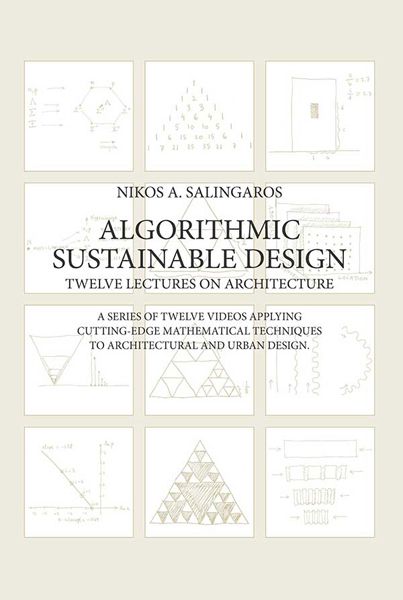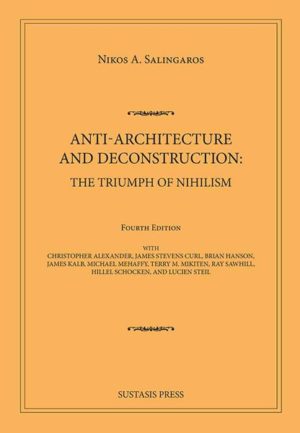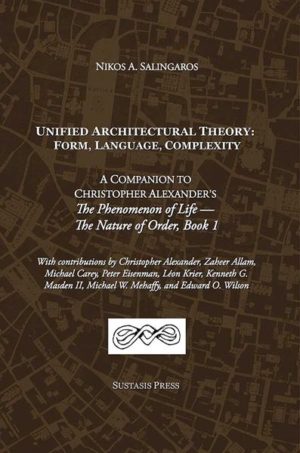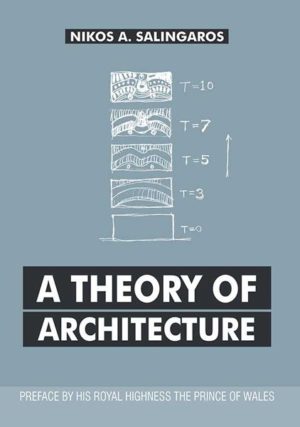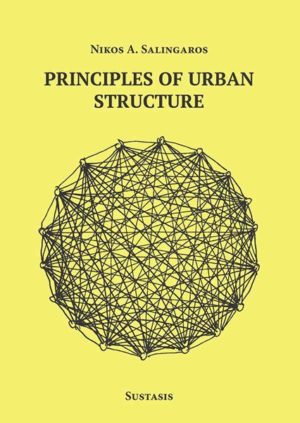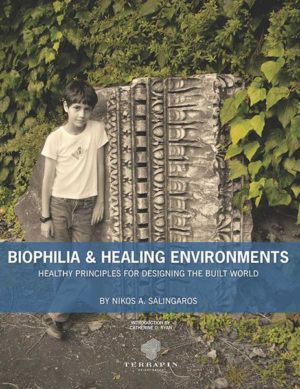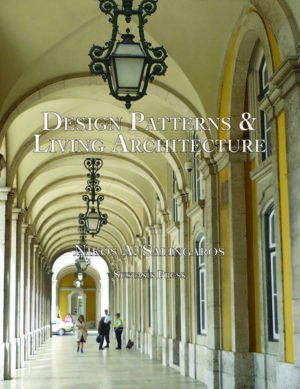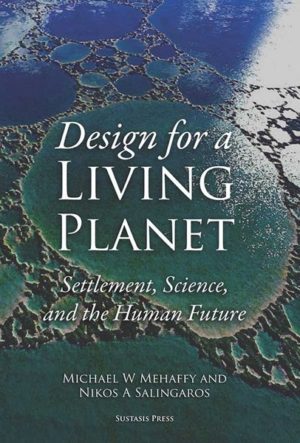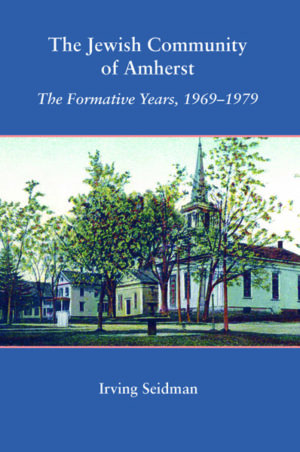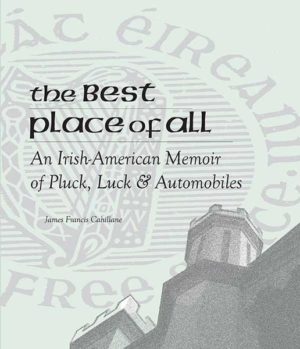LECTURE NOTES TO ACCOMPANY THE FREE VIDEO COURSE ONLINE.
Twelve one-hour video lectures are archived online, and can be accessed for free. These lectures apply cutting-edge mathematical techniques to architectural and urban design. The course material is original, and includes innovative topics such as algorithms, fractals, cellular automata, complexity, emergence, information theory, symmetries, scaling, codes, and networks, here introduced into architecture and urbanism for the first time. Students from around the world can now learn the intelligent basis for architecture, and use it to re-establish adaptability and genuine sustainability.
Twelve Lectures on Architecture is a profound philosophical work presented as a set of architectural lecture notes. It reads very easily, explaining why certain buildings and places speak to our hearts, thus illuminating many of our old assumptions about taste. It includes an excellent introduction to Christopher Alexander’s recent and remarkable work on how biology and architecture intersect in humankind’s unconscious perceptions. This book has the importance to change the world because it goes into things that people should have thought about but haven’t.
“A fantastic manual of architectural algorithms explaining exactly why some designs make us feel at home on this planet and why others offend our neurology.”
James Howard Kunstler
Author and Social Critic, Saratoga Springs, New York
“The new book is like a Swiss Army Knife of tools for creating ultimate human habitats. It is in many ways a compression of this work by Alexander. A better introduction you can’t get!”
�yvind Holmstad
Permaculturalist, Oslo, Norway
“Biology and architecture intersect in mankind’s unconscious perceptions… in ways that cause traditional architecture to be perceived intuitively by most people as more natural and life-affirming than modern architecture.” David Brussat
Architecture Critic, Providence, Rhode Island
“The author presents mathematical concepts and computer technologies: fractals, cellular automata, genetic algorithms. He shows us the beauty of mathematics through its usage. Formulating his message through a broad spectrum of topics, Salingaros appears to be a true Renaissance figure.”
Jadwiga Zarnowiecka
Professor and Architect, Bialystok, Poland
“It would be normal for me to say here that this is one of the great standout books in the science of environmental design — except that, tellingly, it is the only book of its kind of which I am aware. Other authors employ algorithms, scripts, computational design and the like. But for what? For consumer eye candy; for cities as artistic ‘fashion statements’; for fabulous nonsensical structures that show no literacy in the real human problems of a city.”
Michael Mehaffy
Strategic Planning Consultant, Portland, Oregon
“Aims not just at reviewing a mathematics set for architects, but at presenting one useful design tool, a full computational methodology, and a fundamental reason for new structural rules. The most interesting part of this work is that these rules produce new forms belonging to the great set of natural shapes, instinctive architecture, and classic masterpieces of all times.”
Stefano Serafini
Director, Journal of Biourbanism
“‘Ornament becomes substance’ — this made my jaw drop. The analogy with the binding energy of subatomic particles is fantastic. This is really great material.”
Federico Mena-Quintero
Software Architect, Xalapa, Mexico
“This book is intended for students, yet I think it should be read by everyone who is interested in or works with the built environment. Those who teach urban planning do it for their own ego, not for people who are supposed to live there.”
Cristina Caramelo Gomes
Professor and Architect, Lisbon, Portugal
This book was selected as one of the P2P Foundation’s “Top 10 Books of the Year” for 2011.
Nikos A. Salingaros is an internationally known urbanist and architectural theorist who has studied the scientific bases underlying architecture for thirty years. Utne Reader ranked him as “One of 50 visionaries who are changing your world”, and Planetizen as 11th among “The top 100 urban thinkers of all time”. He is Professor of Mathematics at the University of Texas at San Antonio.


